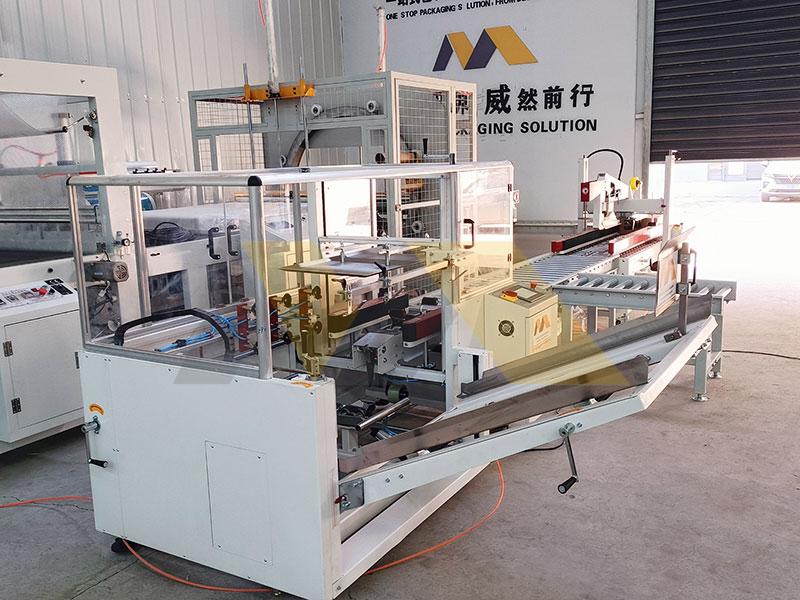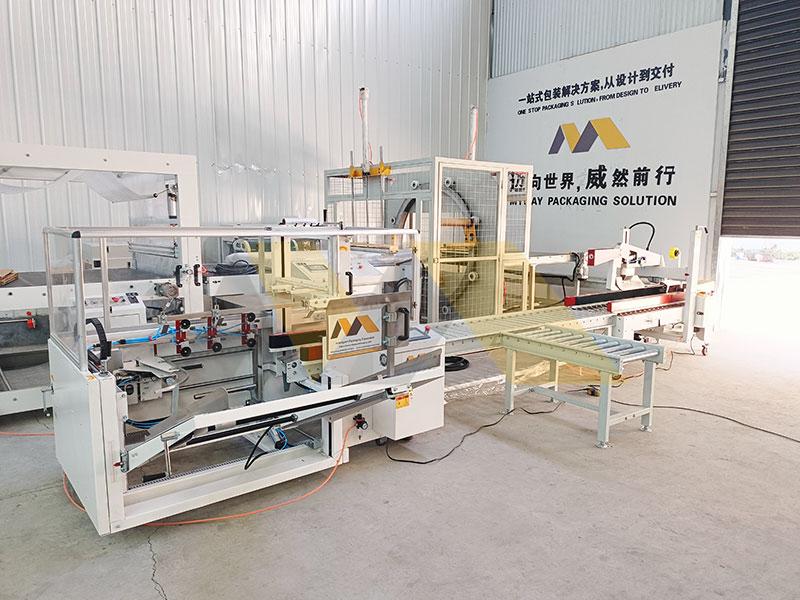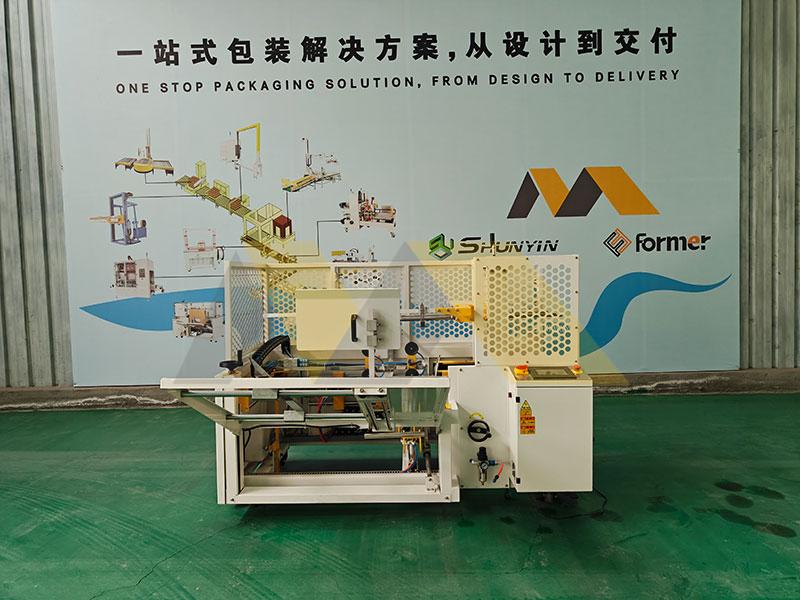Struggling with manual stacking costs and errors? Our palletizers1 solve warehouse inefficiencies with robotics.
Single column palletizers automate case stacking onto pallets using guided lift mechanisms. Key functions include layer pattern formation and load transfer with positioning accuracies under ±0.5mm, significantly reducing labor injuries in packaging lines.

Operating 5 production lines in China, I’ve helped clients like Lambert optimize Canadian facilities. Want guaranteed quality? Our ISO-certified units solve import worries – request quotes at https://mywaymachinery.com/contact/. Let’s address your questions.
What is the function of palletizer machine?
Accidents and unstable loads plague manual stacking. Automated palletizers eliminate these operational risks.
Core functions include precise product placement, layer formation stability, and weight-distribution optimization. Units ensure pattern consistency across shifts while handling materials over 100kg with zero fatigue errors.

Design focuses on three critical operations:
Operational Mechanics Breakdown
| Function | Technical Implementation | Outcome Benefit |
|---|---|---|
| Pattern Formation | Programmable layer sequencing | Prevents load shifting |
| Weight Distribution | Multi-point pressure sensors | Eliminates pallet collapse |
| Height Adjustment | Servo-controlled lift columns | Adapts to box dimensions |
In North America, ice cream packers using our systems reduced damaged goods by 60% despite temperature variations.
Real-World Risk Mitigation
Consider these impacts:
- Worker safety: Removes repetitive 60lb lifting – main cause of warehouse injuries
- Brand protection: Prevents $250k claims from damaged shipments Lambert’s distribution faced
- Space optimization: Narrow-column designs let Japanese clients utilize tight facilities
Our Guangdong factory added cold-chain lubrication for Canada-bound units handling frozen goods.
How to use a palletizer?
New operators often fear programming complexity. Setup is actually simpler than perceived with proper guidance.
Operate through: 1) Feed conveyor loading, 2) Pattern selection interface, 3) Cycle activation, 4) Pallet discharge. Minimal training required with <30 minute startup after unboxing installation.
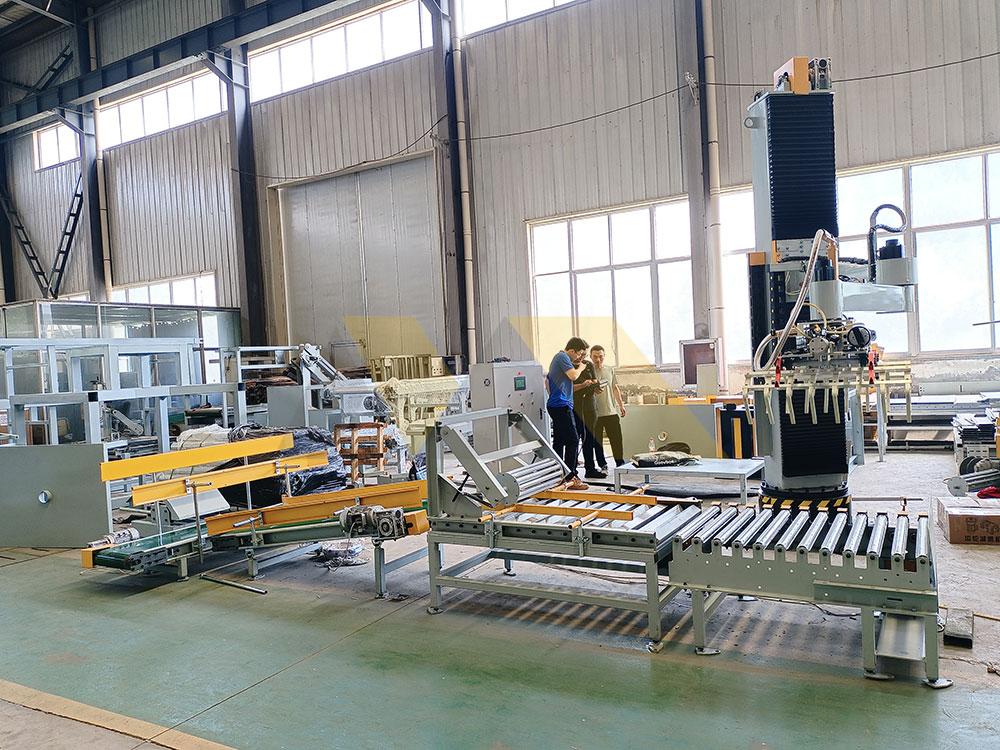
Implementation follows this workflow:
Startup Process Timeline
| Phase | Duration | Technician Requirement |
|---|---|---|
| Unloading & Assembly | 3-4 hours | 2 persons |
| Calibration | 1 hour | PLC engineer |
| Test Run Certification | 30 minutes | Supervisor |
| Staff Training | Half-day | Operator training |
Singapore pharma clients achieve full operation within one work shift through video manuals.
Maintenance Schedule
- Daily: Air filter cleaning
- Weekly: Rail lubrication
- Monthly: Servo calibration
- Yearly: Structural bolt torque checks
Our remote diagnostics access Canadian machines without onsite visits. Contact https://mywaymachinery.com/contact/ for multilingual manuals.
How much does a robotic palletizer2 cost?
Pricing confusion stops automation. Clear technical specs determine costs predictably.
Entry models start at $65,000 while high-capacity industrial palletizers go up to $150,000. Our factory-direct units save buyers like Lambert 40% vs Western brands maintaining rigorous ISO certification standards.
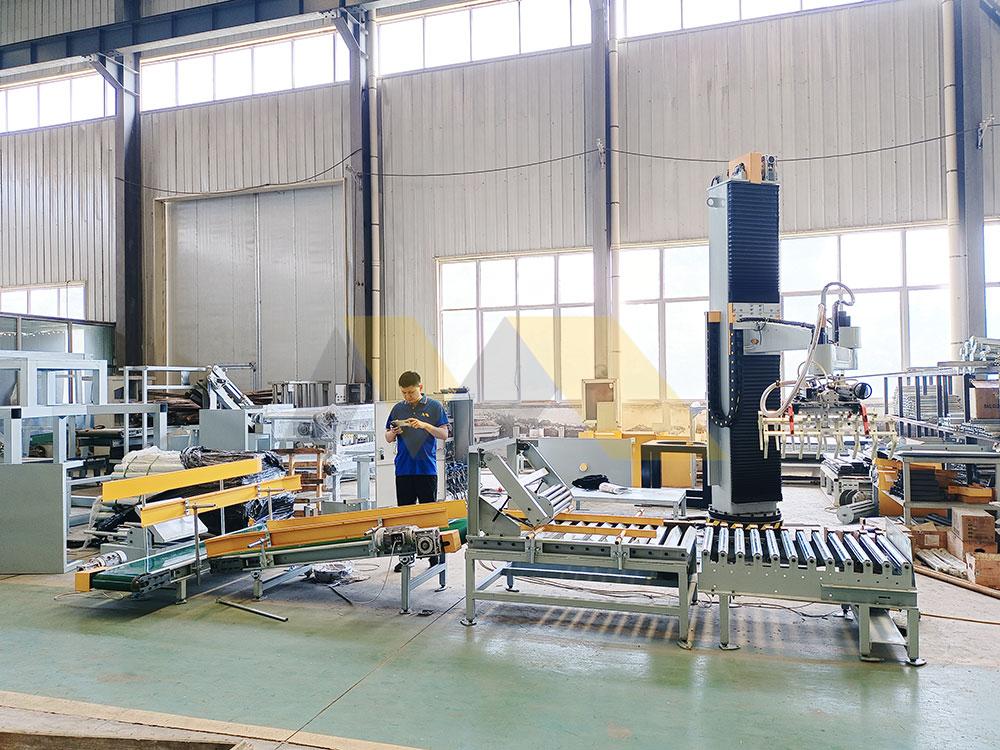
Cost variables break into three key areas:
Cost Driver Analysis
| Component | Budget Option | Premium Impact | Price Effect |
|---|---|---|---|
| Lifting System | Chain drive | Linear motor axis | +$18K |
| Control Interface | Basic PLC | AI vision integration | +$24K |
| Frame Material | Standard steel | Full stainless steel | +$20K |
Export requirements affect final pricing:
- NAFTA compliance: US/Canada duties minimized via certification bundles
- Packaging: Climate-controlled containers for Arctic shipments
- Voltage customization: Rewiring for Japanese 100V systems (+$1.5K)
Comparative Pricing (Samples Shipped)
| Destination | Standard Unit | Cold-Chain Model | High-Speed Unit |
|---|---|---|---|
| Canada | $68,500 | $79,200 | $112,000 |
| Japan | $71,800 | $82,900 | $119,500 |
| Singapore | $67,200 | $77,400 | $109,800 |
Our production line #2 specializes in Canada-ready units shipping monthly to distributors like Lambert.
What does a palletizer do?
Human limitations cause palletizing bottlenecks. Automated systems eliminate these workflow issues.
It automates product transfer onto shipping pallets maintaining precision stacking patterns regardless of shift duration or item size. Creates stable, warehouse-ready unit loads within safety standards.
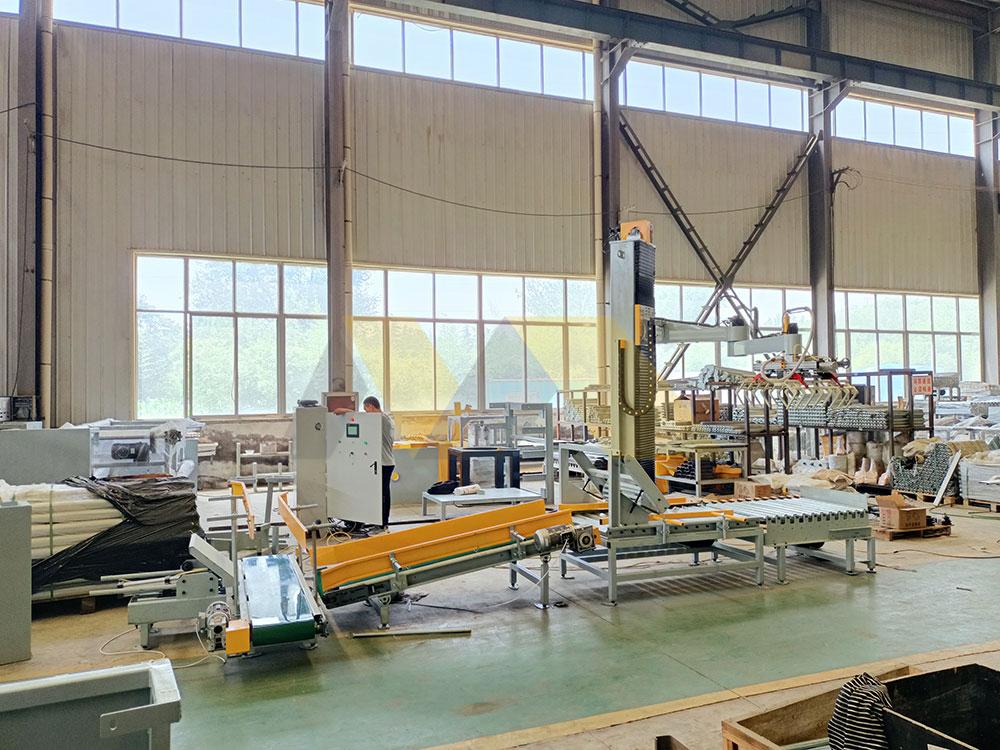
Core operational benefits include:
Performance Comparison Table
| Metric | Manual Operation | Our Palletizer | Improvement |
|---|---|---|---|
| Cycle Consistency | Declines 70% by hour | Maintains ±0.3% | 99.7% gain |
| Stacking Height | Limited to 1.8m | Achieves 3.2m | 177% higher |
| Error Rate | 40-120 faults/day | 0.02 faults/day | >99% reduce |
Food packaging lines in Japan see <0.5% product damage using our hygiene-certificated units.
Specialized Functions
- Mixed-SKU handling: Pattern recognition for cosmetic bundle pallets
- Irregular items: Vacuum head adapters securely grip odd shapes
- Temperature operation: Arctic-grade lubrication for -30°C Canadian winters
For Lambert’s beverage business, custom heads prevent can crushing at 40 cycles/minute efficiency.
Conclusion
Upgrade your facility with robust single column palletizers1. Explore options at https://mywaymachinery.com/contact/ today.

